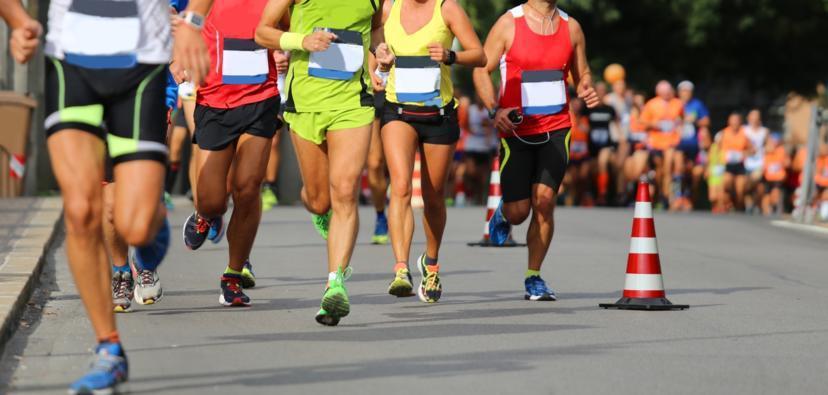Wisconsin Woman with Lupus Participates in Second Ironman Competition

Lupus is a chronic autoimmune disease. It occurs when the body’s immune system attacks healthy tissues and organs rather than viruses. Symptoms vary greatly, which is part of why it is so hard to diagnose. 1.5 million people in the United States alone live with diagnosed Lupus.
What is the Ironman Race?
The Ironman Race, or Ironman Triathlon, is just one in a series of triathlons put together by the WTC, or World Triathlon Corporation. The “Ironman” consists of a 2.4 mile bike swim, a 112-mile bike ride, and a 26.2 mile run. This race is also done without a single break.
Teresa’s Trek
The streets of Madison, Wisconsin were packed with around 2500 of the globe’s most gifted athletes who prepared to literally run, bike, and swim to glory. However, for one person, this competition was more than just a race. This competition is a way to gain control of her life, her choices, and her illness.
Teresa Fosdick, a nurse and a person living with Lupus, participated in her second Ironman competition this past month. She had completed her first Ironman race in 2015.
Fosdick, a nurse and mother of two, beat the sun to Lake Monona on the day of the Ironman race. She has been training for a year in order to take on her second challenge including a 2.4 mile swim, a 112 mile bike ride, and a 26.2 mile run. Sounds like a piece of cake, right?
Fosdick does not scare easy. In fact, this seemingly overwhelming amount of physical activity seems to get the Wisconsin woman’s blood pumping. “I’m feeling really good,” Teresa Fosdick said on the day of the Ironman race, “it’s an exciting morning.”
While Fosdick seems chipper now, she was not always so positive. When she was initially diagnosed with Lupus a decade ago, an Ironman race was the last thing she expected to do. “I was tired” Fosdick explained, “I was in a lot of pain. I had swollen joints and it really affected my life.”
That is upsetting, but unfortunately not surprising. According to studies, 65% of people who have Lupus identified chronic pain as the most difficult part of the disease.
In order to combat this ongoing pain, Fosdick looked to exercise. She started off slower, first with a 5K, which is just over three miles. Soon, Fosdick began to increase her lengths of time exercising working up to not one, but two marathons before deciding 26.2 miles was kid stuff.
While some people reading this may be in awe, this is what Fosdick did to improve how she was feeling. She said that exercising like she was made her mood improve. She felt the benefits of her healthier lifestyle, including that it allowed her to stop taking her medicine.
Unfortunately for Fosdick, Lupus was not the only thing she had to overcome while training for the Ironman race. While biking for Ironman training, she was hit by a car. She even broke some bones.
“[The accident] derailed my training a little bit. I ended up breaking my clavicle here and not having surgery, but I’ve had delayed healing so actually the bone is still broken,” Fosdick said. Fosdick still has a full range of motion, but her strength is not where she would like ti to be. Never one to quit, Fosdick insists that nothing, not even a car, will stop her. She often looks to her children as a source of motivation and inspiration. Nothing quite motivates Fosdick to keep going like the thought of her children’s smiling faces. She enjoys serving as a role model for them, saying “they see me do these races. They’re at the finish line and they think mom’s doing this, she’s out there and she said she would do it anda she does it.”
Athletes with Lupus
While Teresa Fosdick is nothing short of a superhero without a cape and serves as an inspiration to everyone, she is also just another example of how much people who live with Lupus can still accomplish. However, she is not the only one.
Tim Raines, left fielder for the Oakland A’s, was diagnosed with Lupus in 1999. His case was very severe, but through radiation and medicine, he got better. In fact, he went back to playing professional baseball. Raines signed with the now defunct Montreal Expos in 2001.
Similarly, Gabrielle Andrews (not the tennis player) is a Crossfit competitor who had been diagnosed with Lupus in 2008, around four years before she participated in her first crossfire competition. In 2015, she placed sixth in her state of Arizona, and in 2016, she placed in 5th place for the state.
Lady Gaga, who is not technically an athlete per-say, but dances around in six inch heels with the athletic grace of Ginger Rogers, suffers from chronic illness and has tested “borderline positive” for lupus, which runs in her family. She recently had to cancel her European tour due to chronic pain, but she’ll be back doing stunts in stilettos any day now.
What Non-Athletes with Lupus can Do
Weirdly, not everyone likes the idea of Ironman Triathlons. While Teresa Fosdick is a complete inspiration to those around her, she also may be the type of person who always turned to exercise. If some readers out there are not blessed with this athletic inclination, but still want to find ways to increase their health, fear not! There are plenty of ways to incorporate exercise into your life that isn’t Ironman Triathlon-level intimidating.
Yoga has been proven to have several positive physical as well as emotional and mental affects. People who suffer from chronic pain have found that yoga helps them in many ways, including easing stress, helping with depression, and allowing for more mental clarity in its participants.
Search online for “restorative” or “gentle” yoga practices in order to find some yoga videos that will help watchers get into the rhythm of yoga without feeling overwhelmed by the poses or the pacing of the video. If people want more specific yoga practices, searching for “yoga with Lupus” or “yoga with chronic pain” yields a myriad of results. There are many exercises to target different areas. Yoga sequences created around themes of balance, calmness, and strength in various areas of the body are prevalent all over the internet.
If yoga is not something of interest, going on walks is incredibly helpful. A slow walk around the park, or even trying to walk to the post office and back, may help to ease some of the stress experienced with Lupus. Making sure to incorporate some type of exercise will help to make bigger and even more impressive strides later on. Remember, Teresa Fosdick did not start of with the 112-mile bike ride! She started with a 5K, which is only three miles.
So maybe “three miles” doesn’t register to everyone as “only” three miles. Maybe three miles is what you want to work up to, and that’s great! Some light stretching and a quick walk around the block in the morning may set you on the Ironman Triathlon track after all.






